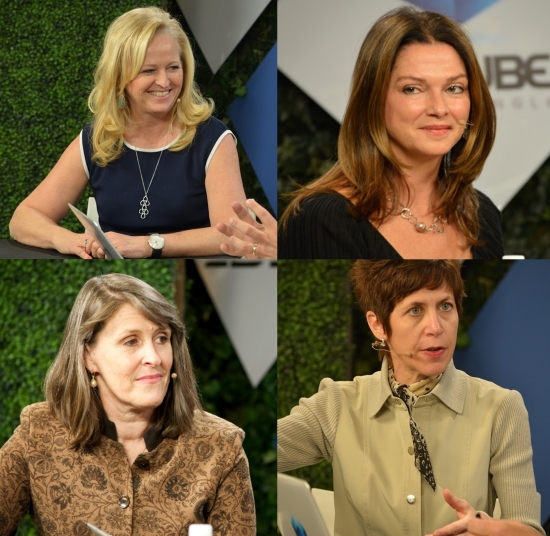 NEWS
NEWS
 NEWS
NEWS
 NEWS
NEWS
Last week, theCUBE, from the SiliconANGLE Media team, covered IBM InterConnect 2016, and the overall theme of the event was the digitization of the enterprise. IBM led with customer presentations, displaying how the company is using all of its resources to bring next-generation technology to all.
Some of IBM’s leading women joined John Furrier and Dave Vellante, cohosts of theCUBE, to discuss the various visions their business units have for improving technology for the enterprise.
Pearson joined theCUBE to talk about cognitive technology and how it is vastly different from the systems of the past.
“A cognitive business infuses cognitive technology to help improve their expertise, improve their discovery, improve the use of massive amounts of data structured or unstructured, but cognitive computing is a system that understands reasons and learns… It’s actually the combination of human and machine, and these two things are coming together in a way that’s very conducive and comfortable, and delivering really good outcomes for clients.
“The other thing I think that’s pretty important is the systems today are deterministic systems. They are programmed by people with a specific outcome involved. A cognitive system is a probabilistic system. It deals with hypotheses so the aperture is wide open to discovery way beyond what someone would have programmed the system to do in the past. Analytics are still (important). You take behavioral and sentiment insight, and couple it with data, and you’re looking at a different outcome.”
Sanders sat down with Furrier and Vellante to talk about transforming the CIO from integrator of systems to integrator of services.
“If you are thinking about it from the customer standpoint, how they can help the business, grow their business, and how technology and what the CIO can help the business do, first [think] of the great technology and capability and all these forces coming together to get you to digitization faster. I mean if you’re a business and you are not paying attention to the value of hybrid and how it could support you going to new channels, going faster into digitization, you’re really missing the point. Secondly, think about how this helps the CIO go from the integrator of systems to a true integrator of services because people need to buy as a service to stay up with this and move forward with it.
“Focus on the data platform … focus on where and how you’re going to leverage your data across environments … now it’s the ubiquity of that data both for systems of record and systems of insight because being able to leverage that data quickly into those systems of insight is what is creating a lot of those new channels. So number one, have a data strategy, and the second thing is to really think about the business problem you are trying to solve as opposed to ‘I want to buy a tower of technology’ or ‘I want to buy this capability.’”
While visiting theCUBE, Thomas discussed the value of open source and how IBM is devoting many resources to supporting projects.
“One thing we definitely have learned is that we need to be involved early on. You can wait too long to get involved in open-source efforts and then at that point you have really lost a critical ability to impact them or to have input into the early evolution of these open-source initiatives. So that’s why you see us jumping in fairly early with things like blockchain, and we’ve been very involved in Spark … Docker containers is another example of a key focus for us. We also understand that for IBM to be effective in these open-source projects, we need to have critical mass around them.
“Clearly in terms of some of the things we do around the compute optimization, we have the capability called platform computing, which is able to optimize a number of different workloads – Hadoop, HPC, in-house analytics; also Spark is a critical element of that. We announced support for Spark last year, and we can optimize spark environments. We continue the evolution of intelligent analytics on our platforms in general, like the mainframe. Last week we just announced that we can now apply the data that’s available in the mainframe environments more intelligently married with our security organization’s capabilities to prevent cyber-attacks. So that is just a specialized form of the platform.”
Wieck stopped by theCUBE to discuss IBM’s approach to middleware, APIs, scalable systems and more.
“It’s all about integration. No company today … is going to do everything by themselves. You’re still going to rely on a lot of things from outside your company to provide an end-to-end experience for your customer.
“At the end of the day, we see clients who are doing digital engagement … wanting to rely on as many integrated services as they can. … You have to have all of your back-end systems able to scale [at a model to match]. …Are you creating that compelling new content, are you really integrating it, and are you optimizing it?”
THANK YOU